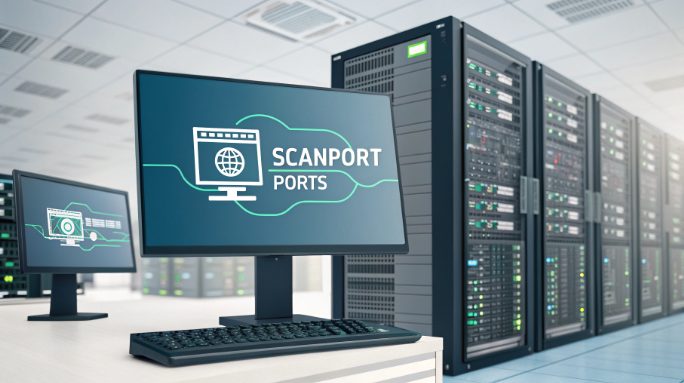The Main Uses and Management Methods of ScanPort Ports

In the ever-evolving landscape of server security and network management, understanding ScanPort functionality and port management has become crucial for tech professionals managing Hong Kong hosting infrastructure. This comprehensive guide dives deep into the technical aspects of port scanning, security implementations, and advanced management techniques that every system administrator should master.
Understanding ScanPort: Technical Deep Dive
ScanPort operates as a sophisticated network diagnostic tool that systematically probes server ports to determine their operational status and security posture. At its core, it employs TCP/IP protocol mechanics to identify open, closed, and filtered ports across your network infrastructure.
- Port Status Categories:
- Open: Actively accepting connections
- Closed: Accessible but no service listening
- Filtered: Blocked by firewall rules
- Unfiltered: Accessible but state unclear
Critical Port Management Functions
Effective port management extends beyond basic scanning to encompass several critical security functions:
- Security Assessment
- Vulnerability detection
- Service enumeration
- Security posture evaluation
- Performance Monitoring
- Bandwidth utilization tracking
- Service availability checks
- Response time analysis
Advanced Port Scanning Tools for Hong Kong Servers
When managing Hong Kong-based hosting infrastructure, selecting the right scanning tools becomes paramount. Here’s a technical breakdown of industry-standard solutions:
- Enterprise-Grade Tools:
- Nmap (Network Mapper)
- TCP SYN scanning
- Service version detection
- OS fingerprinting capabilities
- NSE (Nmap Scripting Engine) for custom scans
- Masscan
- High-speed port scanning
- Asynchronous transmission
- IPv4 address space coverage
- Nmap (Network Mapper)
Implementation of Port Security Protocols
Securing ports in a Hong Kong hosting environment requires a multi-layered approach:
- Baseline Security Measures:
- Default port modification
- Rate limiting implementation
- Access control lists (ACLs)
- Advanced Protection:
- Port knocking sequences
- Intrusion Detection Systems (IDS)
- Real-time monitoring solutions
Automated Port Management Systems
Modern server infrastructure demands automated port management solutions. Consider these technical implementations:
- Automation Components:
- Python-based scanning scripts
- Cron job scheduling
- REST API integration
- Real-time alerting systems
- Monitoring Metrics:
- Response time latency
- Connection rate analysis
- Traffic pattern detection
Hong Kong-Specific Port Management Considerations
Operating servers in Hong Kong presents unique challenges and opportunities for port management:
- Regional Compliance:
- HKMA cybersecurity guidelines
- Cross-border data flow regulations
- Local network infrastructure requirements
- Performance Optimization:
- China mainland connectivity optimization
- International traffic routing
- CDN integration points
Advanced Troubleshooting Techniques
When managing complex port configurations, systematic troubleshooting becomes essential:
- Diagnostic Procedures:
- TCP dump analysis
- Wireshark packet inspection
- System log correlation
- Performance Tuning:
- Buffer size optimization
- Connection pooling
- Load balancing configuration
Future-Proofing Your Port Management Strategy
Stay ahead of evolving security challenges with these forward-looking implementations:
- Emerging Technologies:
- AI-powered threat detection
- Zero-trust architecture
- Containerized security solutions
Mastering ScanPort management and security is crucial for maintaining robust Hong Kong hosting infrastructure. By implementing these technical strategies and staying current with security protocols, system administrators can ensure optimal server performance while maintaining stringent security standards. Remember that port management is an ongoing process that requires regular updates and monitoring to maintain effectiveness in our rapidly evolving digital landscape.

